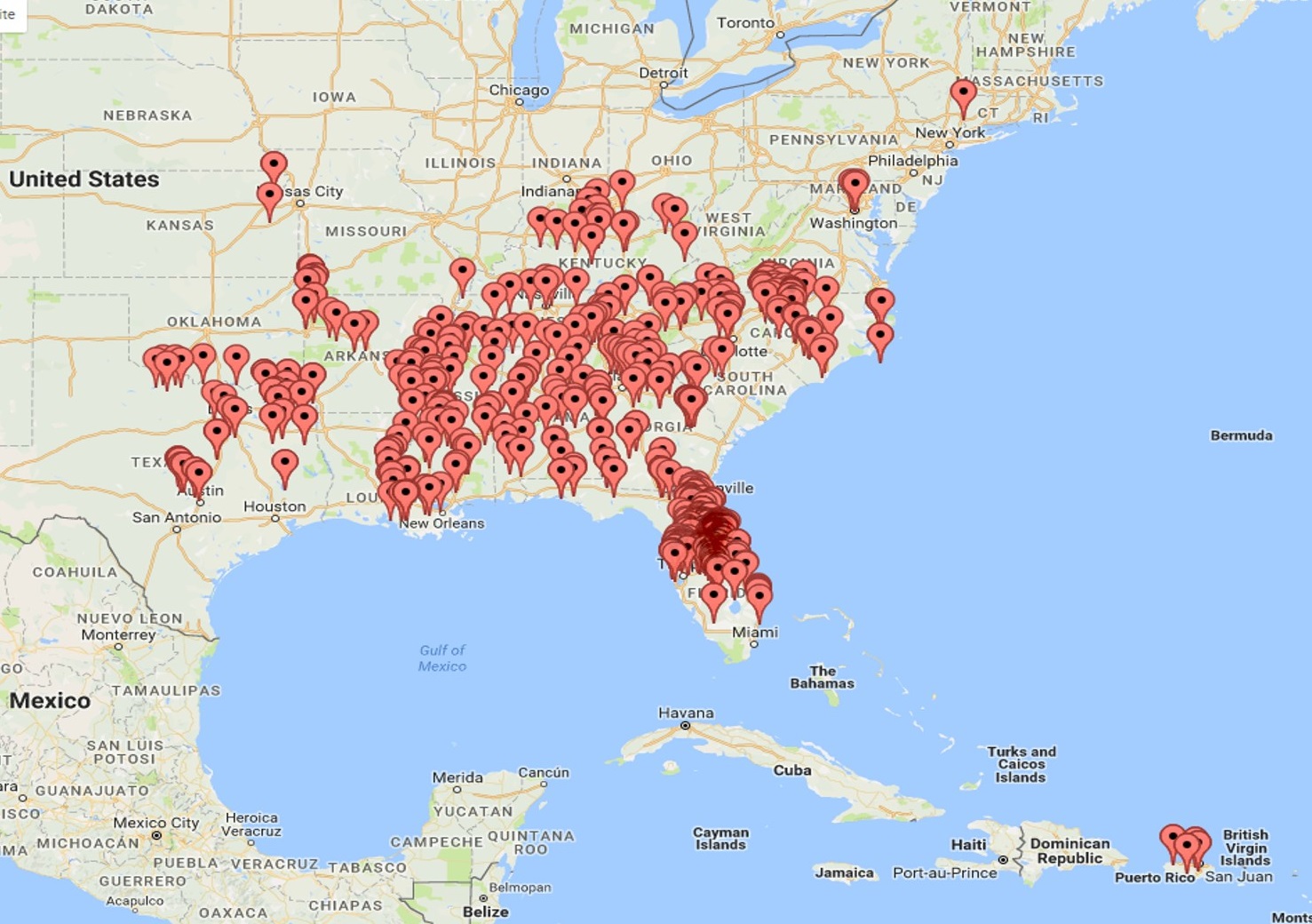USGS PROJECT HOMEPAGE
Protecting diminishing water resources is one of the most pressing global environmental issues and will become more challenging as climate change, species invasions, and eutrophication further degrade surface water quality and quantity. In lentic freshwater systems, bloom-forming cyanobacteria (i.e., blue-green algae) are the primary biological indicators of poor water quality and tend to dominate algal communities under nutrient enrichment. Some cyanobacterial genera produce potent secondary metabolites, such as the hepatotoxin, microcystin, or the neurotoxin, anatoxin-a, that have been shown to lead to the poisoning of drinking water supplies, aquatic foodwebs, pets, and in extreme cases, humans. Cyanobacteria are also responsible for common off-flavors, such as “earthy” and “musty” flavors caused by the microbial metabolites, geosmin and 2-methylisoborneol (MIB), found in municipal drinking water systems as well as fishes raised in nutrient-rich, aquaculture ponds. Because states in the southeastern U.S. are among the leaders in intensive pond-culture of freshwater fish, fish kills and off-flavor episodes can lead to large financial losses for local and state economies. Recreational fishing opportunities can also be lost due to harmful algal blooms. Therefore, research aimed at the improved management of cyanobacteria has benefits to society with respect to water quality and aquaculture, especially given the current challenges of identifying and protecting sites for safe drinking water and palatable fish. For cost effective and efficient surface water resource management, it is imperative to understand which general mechanisms mediate the control or promotion of algal blooms in nature.
This project will provide the necessary framework to create a database on regional cyanobacterial blooms and toxins and identify abiotic factors mediating toxic algal bloom events. Thus, surface water quality managers will be able to better focus their management efforts to protect and improve water quality. Moreover, models developed through this project will be useful for forecasting cyanobacterial blooms in the future, thereby ensuring ample notice to state officials to warn local populations about the risks that waterbodies experiencing algal blooms may pose to human health. Managers of municipal drinking water systems will be able to institute management practices to reduce off-flavor episodes in public drinking water derived from reservoirs, with subsequent reduction of consumers’ complaints and concerns about unpalatable drinking water. And, the collaborative infrastructure created through this project will provide a clear mechanism for water quality managers when algal blooms and concomitant questions about their dominant algal species and toxicity arise.
As part of our extension efforts, we will further refine our simple interactive website where cyanobacterial bloom forecasting models will allow users to determine the risk that cyanobacteria may pose to their waterbodies during the summer months when cyanobacteria are typically dominant (models available here).
Our current sample dataset includes more than 1,000 sites (see map below).

Funding provided by USGS/NIWR
Copyright - Alan Wilson 2007-2017 Design by: Design by Free CSS Templates
